Sony FE 24-105mm f4 G OSS Lens: Detailed Comparative Review
27 Comments
Summary: The possibly first in-depth review of the new Sony FE 24-105mm f/4 G OSS lens comparing it for reference to the Sony FE 24-70mm f/4 and Canon EF 24-105mm f/4L lenses using precise and reliable measurements.
A much anticipated lens
When I started to photograph with the Sony A7R2 in the summer of 2015, the selection of Sony FE lenses was quite limited. You could count them on the fingers of both hands: Sony 28mm f2, Sony Zeiss 35mm f2.8, Sony Zeiss 35mm f1.4 ZA, Sony Zeiss 55mm f1.8 ZA, Sony Zeiss 16-35mm f4 ZA OSS, Sony 70-200mm f4 ISS, Sony 28-70mm f3.5-5.6 OSS, Sony Zeiss 24-240mm f3.5-6.3 OSS and Sony Zeiss 24-70mm f4 OSS. Sony has certainly made impressive progress in expending this lineup in the last two years. It now includes 28 lenses, 14 zooms lenses and 14 prime lenses.Their latest offering, the Sony FE 24-105mm f4 G OSS Lens is the lens I have been waiting for literally since I started using the Sony Alpha system.
First, although back in 2015 the Sony Zeiss 24-70mm f4 was the better of the three trans-standard zooms on offer, it isn’t a great lens, especially for one bearing the Zeiss name. I found it a step back in optical performance compared to the equivalent Canon offerings. The blog of Pulitzer Prize-winning celebrity photographer Brian Smith is a must-follow if you want to keep up to date with the latest Sony FE developments. In his post Are Sony FE Fenses as Sharp as Canon & Nikon Glass? the sharp-eyed reader can notice that all sorts of lenses are compared using DxO Mark scores, but the category 24-70 f4 is missing.
Second, when I was shooting Canon, my go-to-lens was the 24-105 f4L. I had been using it for a decade, since it was introduced in 2005, and such an habit is hard to die. I am sure the Sony 24-70 f2.8 GM is outstanding, but having used a 24-70 f2.8 in the past, I much prefer the additional reach and lighter weight of a 24-105 f4. I almost never shoot wide-open, so I don’t care for the beautiful bokeh of a f/2.8 lens. In addition, I also prefer a 100-400 lens to a 70-200 lens, and the former pairs better with a 24-105. My photography is outdoors and often required me to carry gear all day for long distances in the wilderness, in particular for my recent Treasured Lands photography book about the 59 U.S. National Parks.
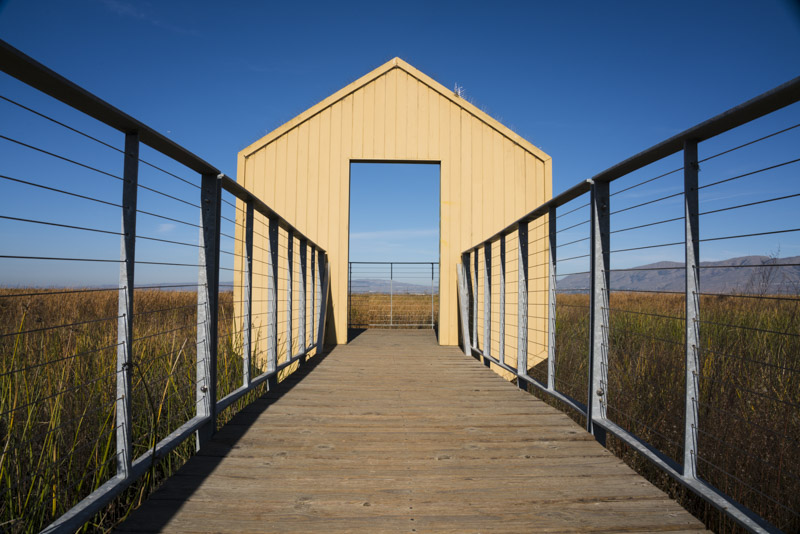
When Sony announced the FE 24-105mm f4, after Brian mentioned in a tweet that it was much improved over the FE 24-70mm f4, I promptly pre-ordered three copies to test, so this is likely the first in-depth review of this lens you’ll read. Why three copies? My past experience of testing lenses has taught me that sometimes sample-to-sample variation is quite significant, to the point that it compares with model-to-model differences.
Specifications compared with Sony 24-70mm f/4
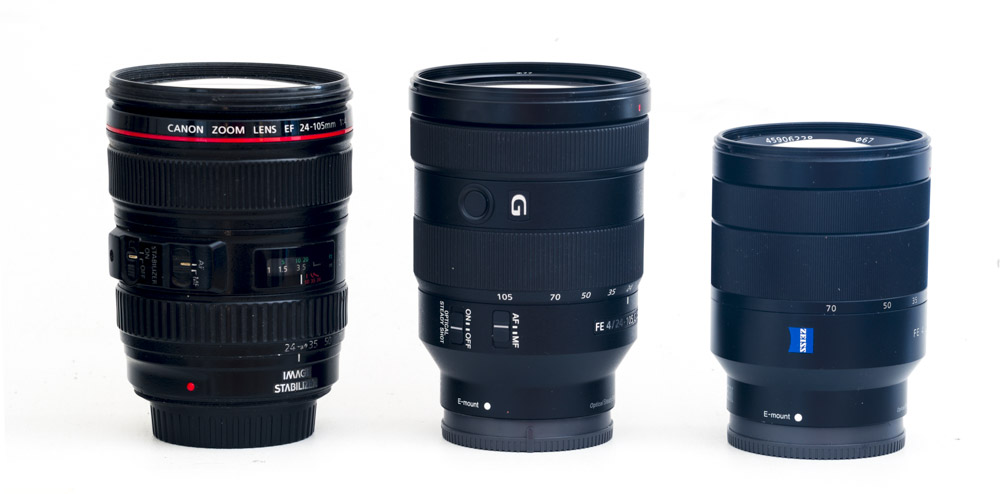
Left to right: Canon EF 24-105 f/4, Sony 24-105 f/4, Sony 24-70 f/4
The size and weight of the Sony 24-70 f/4 made it a delight to carry. The Sony 24-105 f/4 is larger and 50% heavier, but offers 75% more focal range, so that’s a reasonable trade-off, especially considering improvements in magnification, aperture (more blades result in smoother bokeh), and controls. It is extremely similar in appearance to the first version of the Canon 24-105 f/4, with almost exactly the same size, weight (664g), finish, and controls – the current version II of the Canon is quite larger and heavier (795g), though.
| 24-105 f/4 | 24-70 f/4 | |
|---|---|---|
| Close focus | 1.25′ (38 cm), 0.31x or 1:3.2 magnification | 1.31′ (40 cm), 0.2x or 1:5 magnification |
| Diaphragm blades | 9 | 7 |
| Stabilization | Switch on lens, controlled by lens | No switch on lens, controlled by camera |
| AF | Fast and silent. Switch on lens, controlled by both with priority to MF | Fast and silent. No switch on lens, controlled by camera |
| Size | 3.28 x 4.46″ (83.4 x 113.3 mm) | 2.87 x 3.72″ (73 x 94.5 mm) |
| Filter size | 77mm | 67mm |
| Weight | 1.46 lb (663 g) | 15.03 oz (426 g) | Construction | Plastic barrel, rubberized rings. | Plastic barrel with metal finish, finely indented metal rings. |
| Price (11/2017) | $1,300 @ amazon | $1,100 @ amazon |
Operation
Like with other Sony FE lenses, the focus ring functions like an electronic dial, not physically connected to the lens, and there is no focus markings. Focusing is internal and doesn’t extend the lens. The lens is not parfocal, which means that when you zoom, the focus changes, however that change is minimal. The lens extends when zooming in. The zoom ring is solid and doesn’t suffer from zoom creep even pointed straight up or down.AF is quick and silent. The lens is equipped with optical stabilization, which works in conjunction with the IBIS system. A button on the left side of the barrel can be customized. Compared to the Sony 24-70 f/4, the 24-105 f/4 also gains two switches for stabilization and AF. Those switches behave quite differently on the A7R2.
- Stabilization is controlled only by the switch on the lens. The body cannot turn it on or off. I find that unfortunate. Currently, I have my two custom modes on the dial set up for hand-holding and working on a tripod. The hand-holding setup turns stabilization on, while the tripod setup turns it off – using stabilization on a tripod reduces image sharpness in a small but measurable way. With the 24-105 f/4, in addition to turning the dial, I’ll have to remember to operate the switch on the lens.
- AF is controlled by both the switch on the lens and the camera. However, AF is active only if both lens and camera are switched to AF. I find it all too easy to brush the switch on the camera by accident and put the camera in manual focus mode, so I would have preferred that the lens switch has priority over the camera.
Visual comparison
The main issue with the 24-70 f/4 is that corners and edges are rather soft, and stopping down does not improve them. Let’s see if the 24-105 f/4 is an improvement by looking at a section of my photography library. The detail is a 600×400 pixels crop of the upper right shelf, the one with the small books.
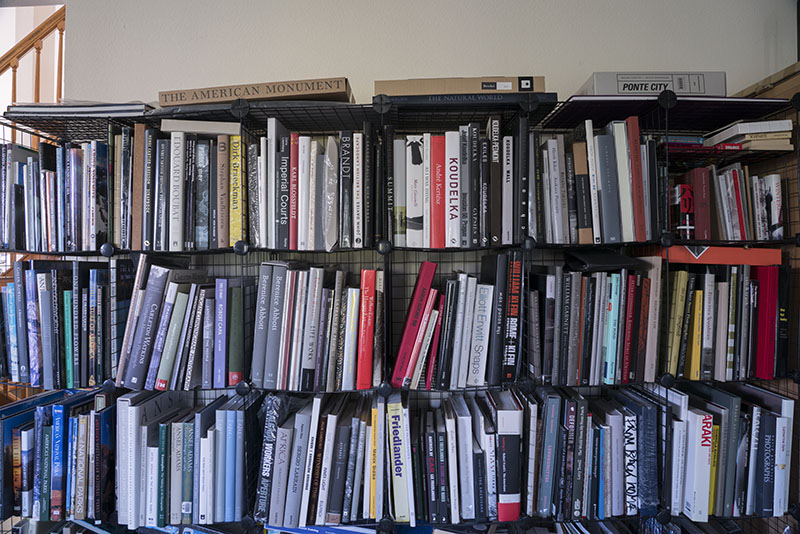
Below is a 100% detail view of pictures from the Sony 24-70 f/4 at respectively f/4, f/8, and f/16. Notice how the title of the book with the grey spine, the author of the André Kertész book, and the Chinese characters are unlegible at all apertures.
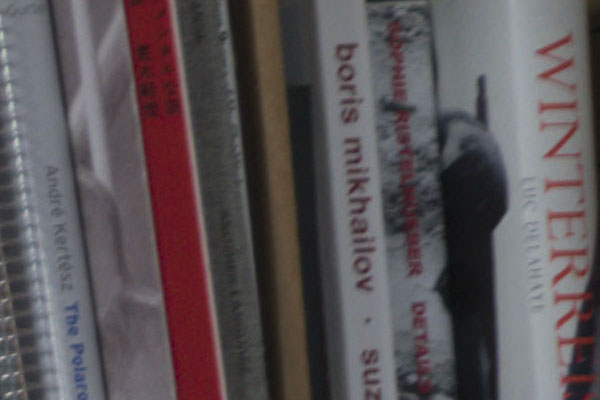


Below are pictures from the Sony 24-105 f/4 at respectively f/4, f/8, and f/16. Even wide-open is already better than the best from the Sony 24-70 f/4. Stopping down improves image quality further, and at f/16, diffraction degrades it.



Below are pictures from the Canon 24-105 f/4 (Metabones adapter) at respectively f/4, f/8, and f/16. Sharpness is better than the Sony 24-70, but not as good as the Sony 24-105, and there is more chromatic abberation than in any of the two Sony lenses.
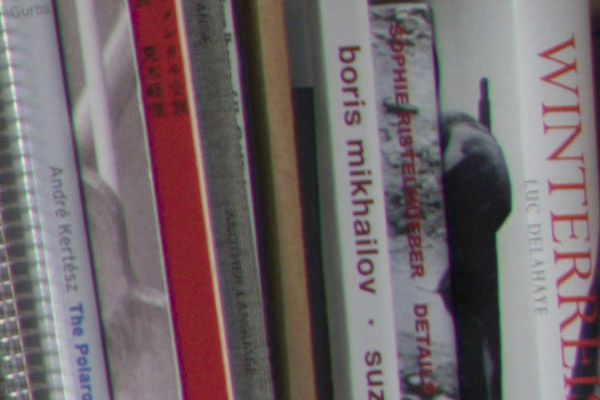


MTF Measurements
Visual evaluations are all good if you don’t have better, but measurements are more precise and remove any subjectivity. I used a target and software from Imatest, the leader in image quality measurement. Based on photographs of the target, Imatest automatically computes measures of lens performance.
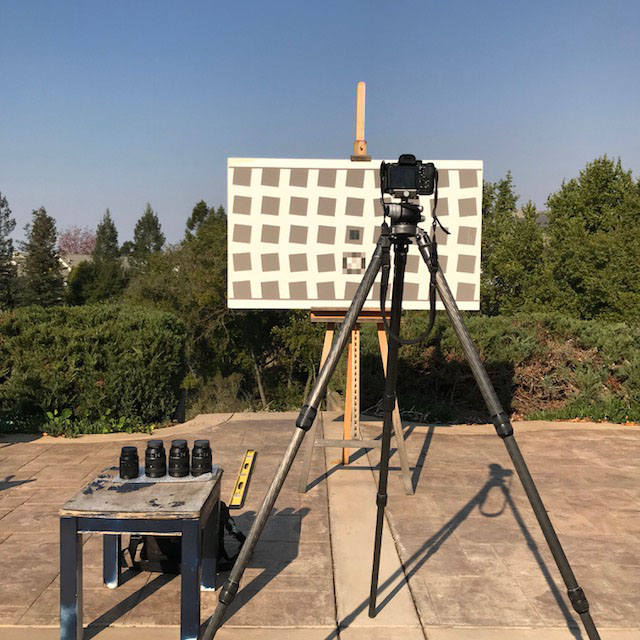
This resulted in a lot of data, here is how to read it:
- The five sets of graphs are for the focal lengths 24mm, 35mm, 50mm, 70mm, and 105mm.
- In each set left quadrants (A,B) are two different copies of the Sony 24-105 f/4 lens. Top right (C) is the Canon 24-105 f/4 lens. Bottom right is the Sony 24-70 f/4 lens
- Each quadrant represents lens performance for the five f-stops between f/4 and f/16.
- Red is image center, green is part-way, blue are corners, and black is a weighted average of the three previous values.
- The value plotted as bars in the graphs is MTF 50, a good indicator of sharpness.
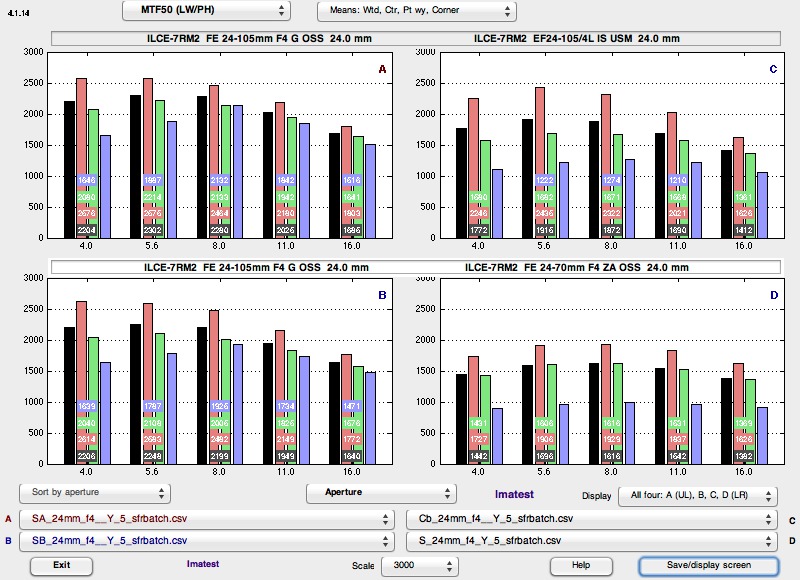
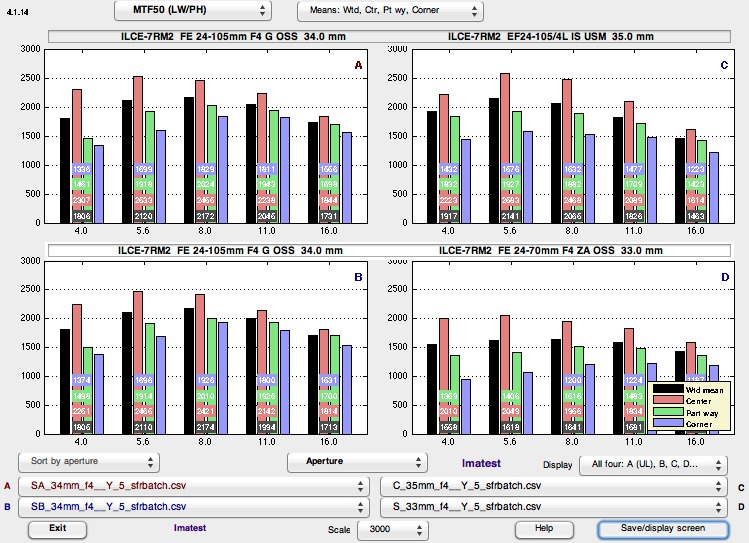
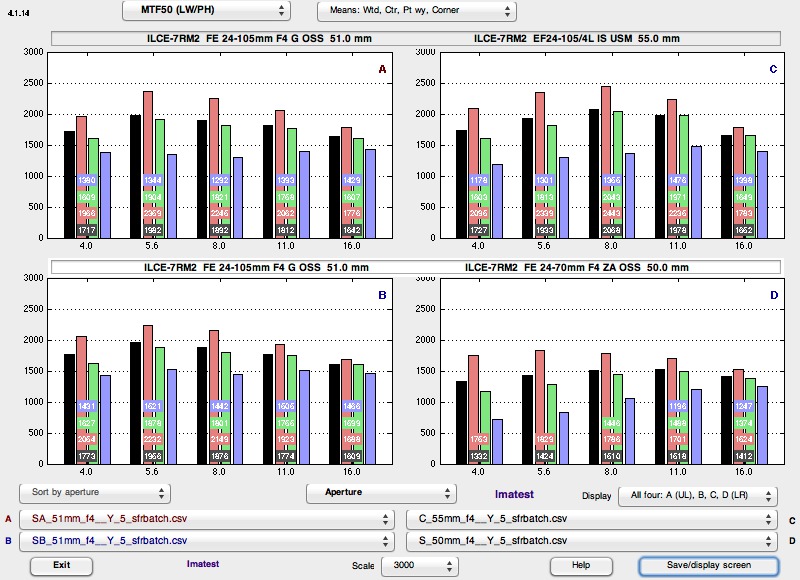
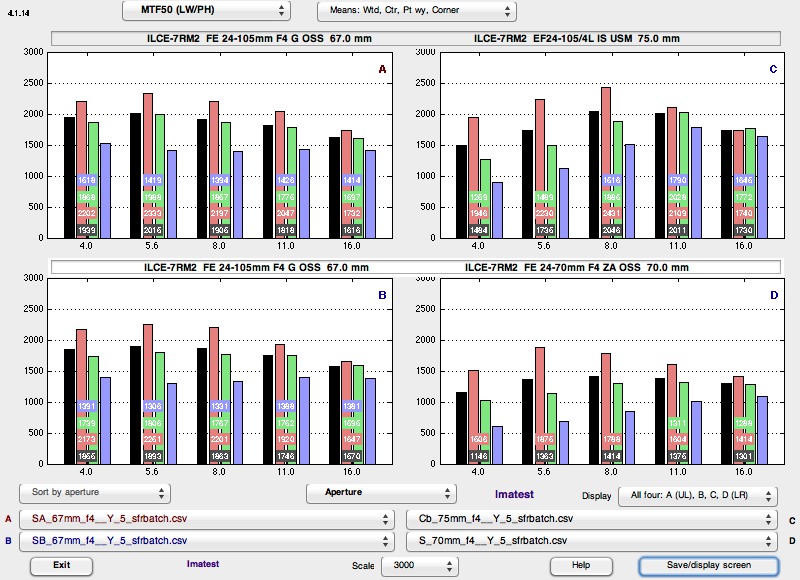
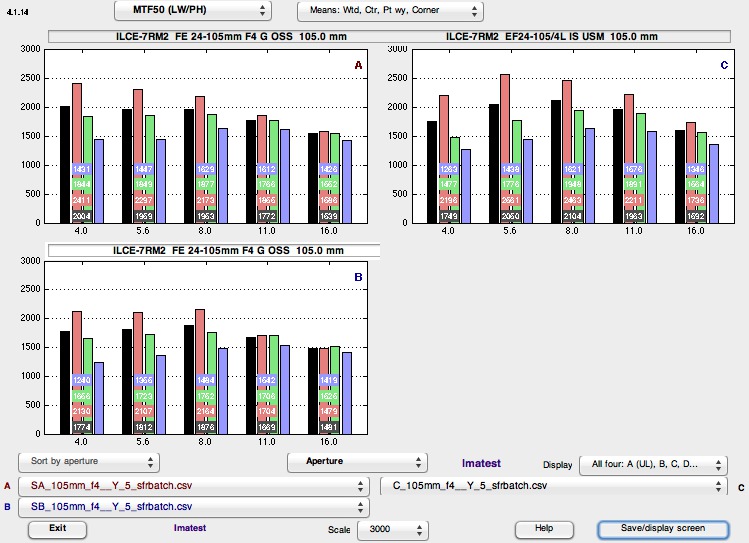
A wealth of information can be found in the graphs above, but here are a few general observations. Some will be well-known to some readers, but are worth repeating for others.
- Aperture. Lenses are sharpest at middle apertures (sharpness is limited by abberations at wide apertures and by diffraction at smaller apertures. In fact, by f16, all lenses perform almost the same, which is why I didn’t bother to make measurements at f22). If given the choice, use a middle aperture such as f8.
- Corners vs. Center. Center sharpness is always better than corner sharpness. At wide apertures, sharpness is less uniform across the image, with corners lagging behind. Stopping down often improve corners more than the center, making sharpness more uniform.
We find that there is a small, but measurable sample-to-sample variation between the two different copies of the Sony 24-105 f/4 lens. The sample A is clearly better. For the sake of presentation simplicity, I have omitted graphs from the third sample, but they are in the same ballpark. Based on experience testing other lenses, Sony’s quality control is better than average, since I have seen larger sample-to-sample variation.
The first set of graphs at 24mm validate what we observed visually: that Sony 24-105 f/4 has the best corner performance and it keeps improving as the lens is stepped down, and Sony 24-70 f/4 has the weakest one, with no improvements brought by stopping down. The Canon is in between the two. The Sony 24-105 f/4 performs great at f/8 and 24mm, my most used combination!
Based on visual observations, I expected the Sony 24-105 f/4 to measure better than the Sony 24-70 f/4, but the magnitude of the difference at all focal lengths surprised me. Even wide-open the Sony 24-105 f/4 is clearly better than the Sony 24-70 f/4 at any aperture, both in the center and corners. To be totally fair, the Sony 24-104 f/4 is new out of the box, while my 24-70 f/4 has been knocked around quite a bit. I didn’t baby it while climbing mountains. It is possible that its alignment was off. This has happened before. One time, while testing new lenses, I included my Canon 24-104 f/4 for reference and noticed that its performance wasn’t as good as what I remembered measuring in the past. I sent the lens to Canon Professional Services for checking, and sure enough, they found that it needed re-alignment!
Distortion
Like many trans-standard zooms, the 24-105 f/4 is not particularly well corrected for distortion. It suffers from barrel distortion at its shorter focal length, and pincushion distortion at the longer focal lengths. This is readily observed on the images of the Imatest target, respectively at 24mm and 105mm. Those images were shot wide-open, and vignetting is visible.
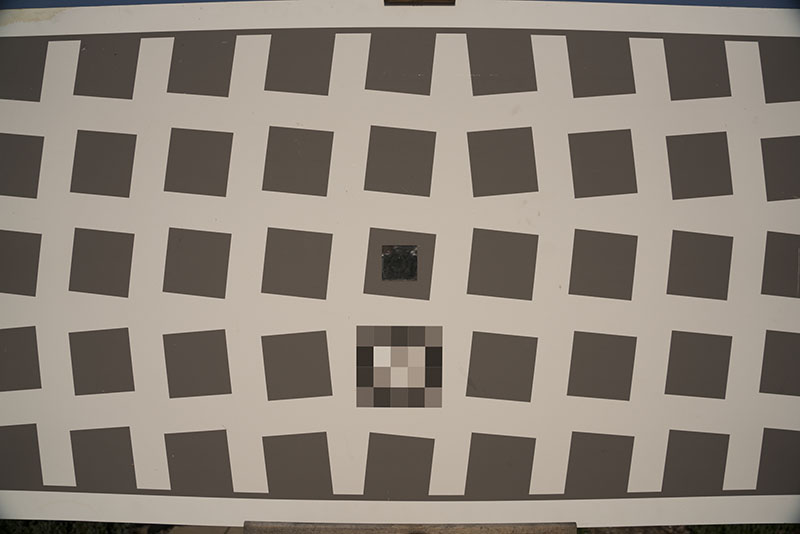
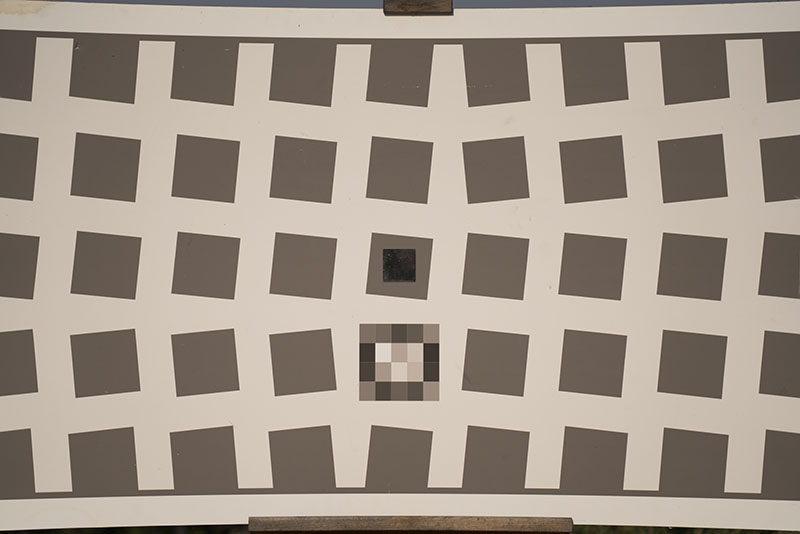
In practice, this is easily and automatically corrected in Lightroom with lens profiles. You can also use Photoshop’s Lens Distortion filter with the opposite of the coefficients below. However, you have to make sure that the compositions was not too tight to the image edges to leave room for the lost pixels. In fact, with its barrel distortion at 24mm, the field of view is probably more like 22-23mm, and after correction should be very close to 24mm.
Here are the measurements from Imatest.
| Sony 24-105 f/4 | Sony 24-70 f/4 | Canon 24-105 f/4 | |
|---|---|---|---|
| 24mm | -3.5% | -3.5% | -3% |
| 35mm | 1.5% | 2.1% | 1.1% |
| 50mm | 3.1% | 4.1% | 2% |
| 70mm | 3.5% | 4.3% | 2% |
| 105mm | 3.1% | 2% |
Vignetting
The main weakness of the lens is strong vignetting at 24mm. So strong that uncorrected images have ugly black corners (see example images), something that I have not observed with any other lens in recent memory. Applying a software profile correction sends those corners into oblivion in order to correct the distortion, so the blackening disappears, but there is still some residual vignetting. Stopping down only reduces the problem, and so does zooming to 28mm. By 35mm, vignetting is reasonable. Note also that using a regular polarizing filter at 24mm worsens the black corner issue significantly.Example images
I took a quick mid-day walk at Alviso. The two last photographs were made from the same viewpoint to illustrate the difference in field of view between 105mm and 70mm.

24mm, f/8

45mm, f/8

24mm, f/8

85mm, f/16

65mm, f/8

35mm, f/8

105mm, f/11

70mm, f/11
Conclusion
The wait has been worth it. Sony finally gets it right for this supremely versatile lens. Optical performance is much improved compared to the Sony 24-70 f/4, in particular with respect to the main weakness of that lens, corner sharpness. It also compares well with the excellent Canon 24-105 f/4L. Like for this lens, a compromise has been made with vignetting and distortion, which is a minor issue if images are post-processed. Definitively recommended! This review required a lot of attention to detail. If you have found it useful, consider buying the lens from my affiliate link at Amazon. Thanks!


Thanks for a great review. There seems to be some heavy vignetting at the wide end. Is there a proper lens profile in LR to correct it automatically? I assume the sample images are from unprocessed RAW files. Does the Sony in-camera jpeg engine clean that up nicely when outputting a jpeg?
That’s an excellent observation. As of LR current (2015.13) release, there is no profile for the 24-105 f/4. However, there is already a profile for the previously released Sony lens, the 100-400. I haven’t tried in-camera jpgs, since this is not part of my workflow.
The latest LR CC classic update has a profile that very well corrects the vignetting and distortion!
Thanks for the great review!
There is a lens profile for LR7.1/ACR10.1 :
Manufacturer Lens Lightroom/Camera Raw version
Sony FE 24-105mm F4 G OSS 7.1/10.1
https://helpx.adobe.com/camera-raw/kb/supported-lenses.html
Thanks George and Peter. That explains why I didn’t see lens profile. Turns out that to use it, I must upgrade my computer operating system! Isn’t tech wonderful? The new profile is only supported by LR7, not LR6. LR7 in turn doesn’t run on Mac OS 10.9.
Thanks for your review. There are a update for Lightroom 6, Lightroom ver. 6.14, which provides a lens profile for the 24-105 f4.
Thank you for taking the time and effort to provide us with the test
cheers
Jim
Thanks for doing this! I’ve got an evaluation unit coming soon, but anticipate I’ll be buying it, based on what I see here.
Thanks for your effort!
I’ve been wondering if an upgrade from my very good Canon 24-105 would be worthwhile. For now I think I’ll stick with the Canon and the MC-11 on the static subjects I generally shoot.
William, I too used Canon glass for a while, but there were always glitches with the adapter, so I prefer to use native lenses when possible.
Well… I broke down and ordered the Sony. After doing some tests I noticed some weakness in my Canon at 24/4.
Thanks for the great review!
I’ve been searching for a real comparison (not just test shots from the Sony events) for a while now.
Looks like I’ll be pulling the trigger and grabbing a used A7r2 & this lens. I was waiting for a mirrorless, full frame, solution under $3k and 3 pounds to upgrade from my current Nikon APS-C setup. This looks like the perfect choice.
BTW I’m impressed that you got those wire cubes to hold so many books.
Currently, the A7R2 is a great value and remains an exceptionally capable camera.
Great review…but I would have really liked to see comparison to the Sigma Art lens which I have and is amazingly sharp (using MC-11 adapter). Interested to know about focus motor noise and auato focus speed comparison which is a problem with the Sigma.
Not much to say there besides the fact that AF if totally silent and fast.
Does the Sony equal the image quality of the Sigma (which in my copy is stunning)? That would be nice to know as I would have IQ trump focus noise since I don’t shoot video. The Sigma is superior to the Canon. (I owned both at the same time).
I don’t know. Due to size/weight (to which an adapter has to be added), I did not consider the Sigma for an all around lens. However I have the 20/1.4 which is excellent indeed.
Lensrentals I believe tested sigma 24-105 against canon 24-105 and found difference in performance to be negligible, if I remember correctly. Search for yourself of interested, but it is probably safe to say comparisons between sony amd cannon will be similar to sony and sigma for lens characteristic evaluation.
Thanks, here it is: https://www.lensrentals.com/blog/2014/03/a-24-105-comparison/
Apparently the Sigma Art lenses will be released in native Sony FE mount some time early next year. Competition is good.
Thanks for this review! Really made this a tough decision for me. Right now I’ve got Milvus 50, 85 and 135, and was considering selling the 50 to fund this 24-105. The 85, 135 and 24-105 all share a 77mm filter thread, and I was thinking this 24-105 would sure be a good option when I need to be fast or capture motion while also giving me the flexibility of a well rounded 3 lens kit+.
But… the mtf scores are not very appealing in comparison to milvus. I don’t think I could part with milvus 50 for this lens… if I remember correctly milvus 50 exceeds 4000 lines in center at f4, 1.5x – 2x what this 24-105 produces.
I worry that everytime i consider using the lens I will be choosing between convenience and quality
A good 50mm prime is certainly significantly better. However, while the relative values are very repeatable, I would take the absolute numbers with caution, for instance I have found them to change with lighting conditions. In the lensrentals.com link above, note that although they do not mention the crucial f-stop, numbers for the Canon are less than 50% those that I measured, even though the 5Dmk2 has half number of pixels of the A7R2.
Thanks for the review! If Sony can bring sigma Art lenses to their belt, then it would be great for many users. They’ll finally be able to buy some top quality lenses that don’t cost beyond their reach and which don’t need a third-party adapter. It would be a much awaited release.
So is the holy trinity of travel photographers to be the 12-24, 24-104 and 100-400 (all f 4)?
Hi thanks for your detailed review.
Currently I have a Sony a7 and Fe 2470 f4.
I am considering upgrading to Fe 24105 f4.
I am just wondering is a7 a good match for 24105 or i need a a7rii to match up with it?
Thank you
Many thanks for your time in this review, very helpful.
I end here looking for a comparison with the 2470 2.8 gm, but it seems nobody did that “vs” yet
i get it now 🙂